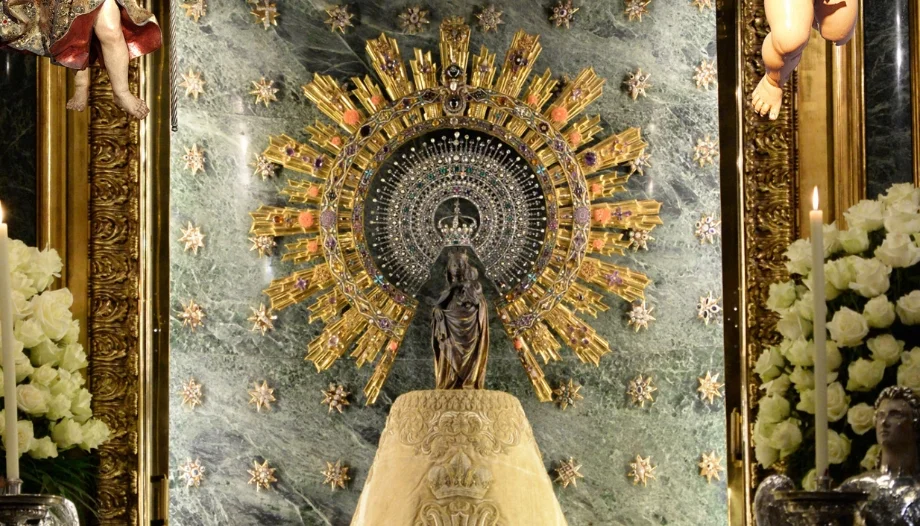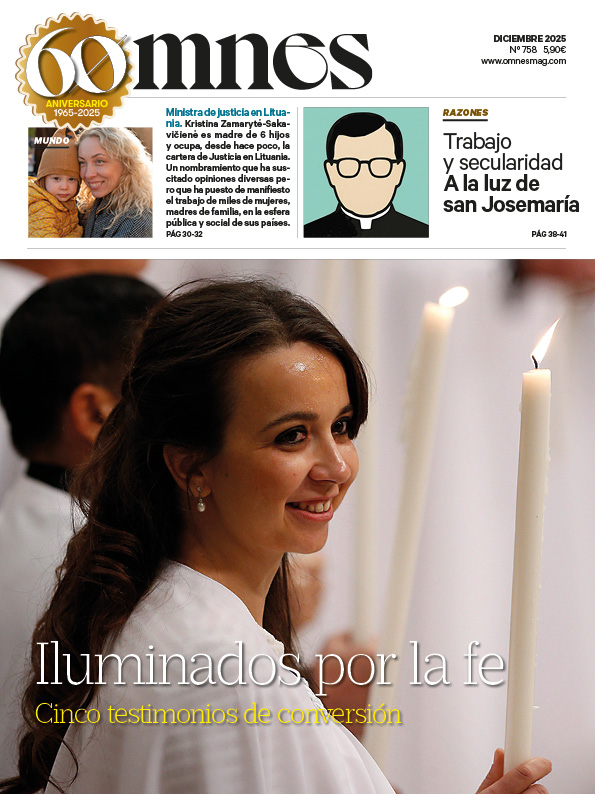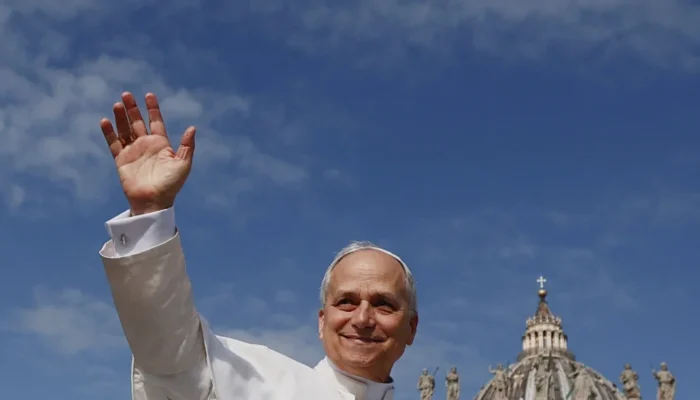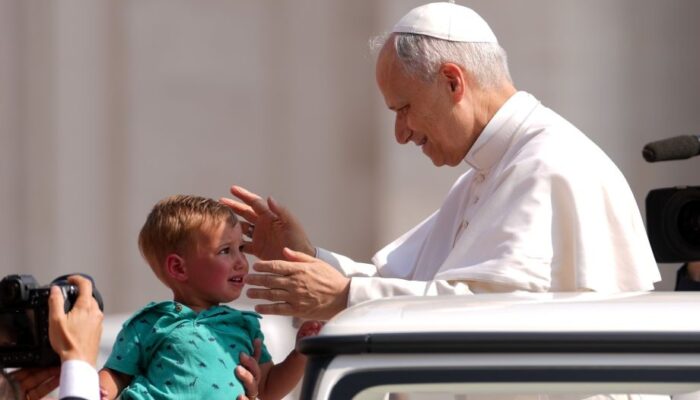In reality, and always according to tradition, the Virgin Mary visited Santiago Apostle on the banks of the Ebro River, at the height of the then Roman colony of Caesaraugusta, in a cold dawn of January 2 of the year 40 of our Era. That is, in fifteen years will be commemorated the 2,000 of that miracle, which is still remembered every half day from the loudspeakers of the Basilica of the Pilar in Zaragoza.
It is for this reason that, every 2nd of each month, the Virgin does not wear any mantle and is exhibited to the devotion of the faithful on her column of Jasper, covered by a silver sheath and that was brought by her from Jerusalem on that distant night, and that the devotees can venerate at the back of the Camarin. Still, every night from January 1 to 2, a ceremony similar to the Midnight Mass is celebrated in the basilica, recalling her coming in mortal flesh.
The birth of a party
However, until the 17th century, the day of the Pilar was celebrated on August 15, the feast of the Assumption. The professor of the University of Zaragoza, Mr. Guillermo Fatás Cabeza, published an article entitled "La fiesta mariana del 15 de agosto" ("El Mirador"). Heraldo de AragónThe letter was published on Sunday, August 18, 2024) in which he recalled that the feast of the Assumption of Our Lady is a feast that in Aragon, since the time of the Crown in the Middle Ages, has an important implantation and that on this day, the Collegiate of Pilar celebrated the dedication of the Church "...".in nomime propio"until the Sacred Congregation of the Rites in the Vatican prohibited, on June 10, 1610, such rite. Ordering that it be done in the name of the Metropolitan (La Seo) and that the Mass be moved to October 12, as was done in the other churches of the Archdiocese. With the support of the Council of Zaragoza, which had been at odds with the canons of La Seo since time immemorial.
The people of the Pilar managed to celebrate their dedication feast; moving it from August 15, which was the traditional feast of the Pilar, to October 12. This happened in 1613. On the other hand, October 12 in Zaragoza had been celebrated since 1119, since on that day and in that year the Aljama Mosque was consecrated as a Christian cathedral under the invocation of the Savior and the feast of San Valero was also institutionalized on that day as the patron saint of the city, and on those same dates, the most important fair of the year was celebrated in the city, the festivities of El Pilar are still called "Las Ferias del Pilar" because it coincided with the beginning of autumn, when all the agricultural work in the Ebro valley had been done, the mountain cattle had already gone back down to the Ribera in their transhumant cycle and the sowing work for the following year was beginning; That is to say, one economic year was ending, another one was beginning and the first days of autumn were used to make the annual purchases for the winter.
The situation only worsened, with some canons confronting the others and the archbishop in the middle. Such was the crisis that King Philip III had to intervene and the canons of the Seo had to give in. San Valero would continue to be patron saint of the city, but would have to share his patronage with the Virgin of Pilar and the feast of the Visigoth bishop would be moved to January 29 until today, while October 12 was institutionalized as the day of the Pilar and Zaragoza would have two cathedrals but a single unified chapter. Thus, the day of the Pilar on October 12 has been celebrated uninterruptedly since 1613, the year in which the City Council declared that date a holiday. The Virgin was not the patron saint of the city until May 27, 1642. This happened two years after the Miracle of Calanda. In addition, the patronage will be extended to all of Aragon in 1678 by decree of the Cortes of the Kingdom. Charles II will obtain from Pope Clement X in 1676, the Bull of union of both councils in one for both cathedrals residing half the year in the Seo del Salvador and the other half in the Pilar.
In the background of this rivalry was the preeminence of both temples. According to the canons of the Pilar, their church was the oldest in Zaragoza, since it was at least in worship since the 7th century under the invocation of Santa María la Mayor, while the Cathedral is later, from the 12th century, and unlike Santa María del Pilar, there had been an interruption of at least 400 years of Catholic worship.
The consolidation of Pilar Day and its legacy
Differences aside, the 12th of October was consolidated as the feast of the Pilar in the middle of the 17th century. It was at the end of the 19th century when the date was declared a National Holiday on the occasion of the Fourth Centenary of the discovery of America and at the beginning of the 20th century the devotion to the Virgin was associated with the Fiesta de la Hispanidad or Fiesta de la Raza, as it was then called -the concept of Hispanidad is later-. Around that time she became the patron saint of the Escuela de Guardias Jóvenes and later of the Guardia Civil. The national flags of the American countries that surround the Holy Chapel, were brought by their respective ambassadors in 1908 after being paraded in a brilliant and exciting ceremony through the streets of Zaragoza, from that same period is the title of "Captain General" granted by the then monarch Alfonso XIII.
The current format of the day of the Pilar, with its famous offering of flowers, dates from 1958 and in the last quarter of the twentieth century the day of the Pilar also became a celebration of Aragonese exaltation. It will be in the XXI century when the idea of Hispanidad is strongly retaken with the presence of many American countries in the Offering and the election of one of them as guest.
The day of the Pilar is a moment of enormous popular religiosity, in which the feelings of a people converge with the sacred offices in honor of the Virgin. The day begins with the Mass of Infants, which is attended by many pilgrims who have spent the night walking from their places of origin, some 30 and 40 kilometers away to reach the temple. After the Mass, the Rosary of the Dawn will enter the Basilica, and when it leaves the Pilar, the offering will begin, which has lasted 14 hours in recent years. The High Mass will take place at 11 a.m., and a small procession will go through the square. The events in honor of the Virgin conclude on the 13th with the offering of fruits in the morning and the Crystal Rosary in the afternoon.
Virgin of Pilar
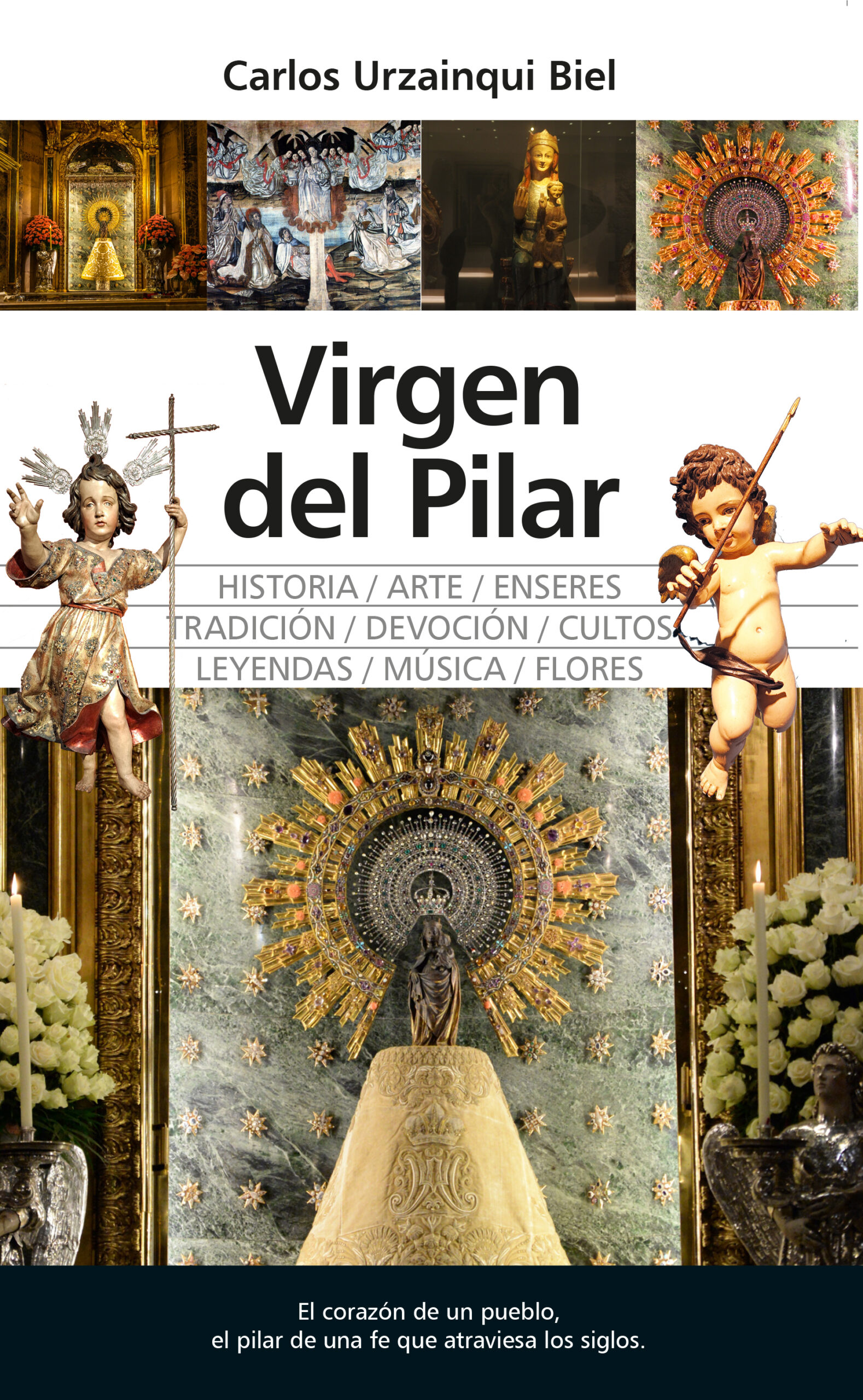
Historian and cultural disseminator. Graduate in Philosophy and Letters. Writer of The Virgin of Pilar

